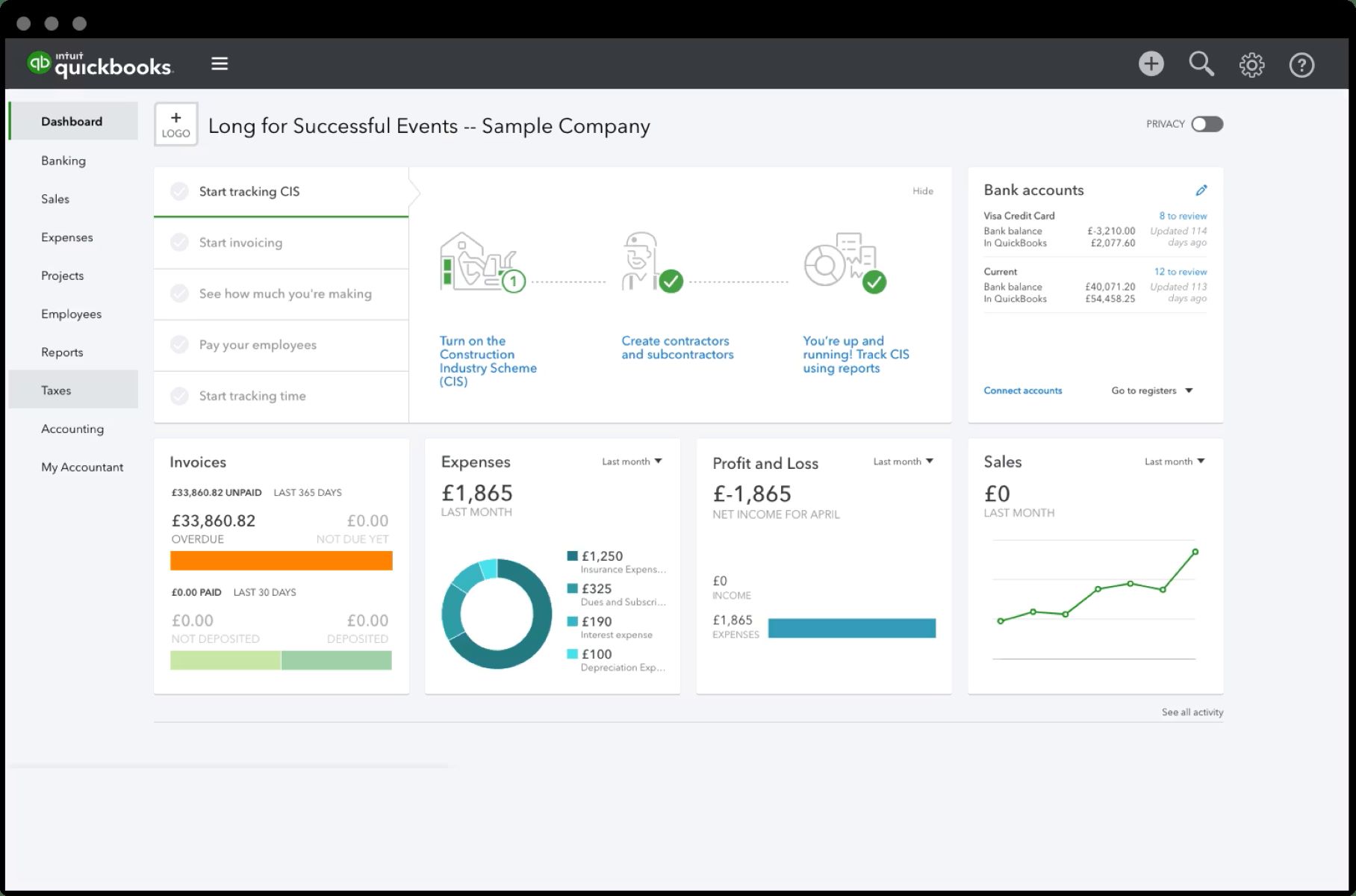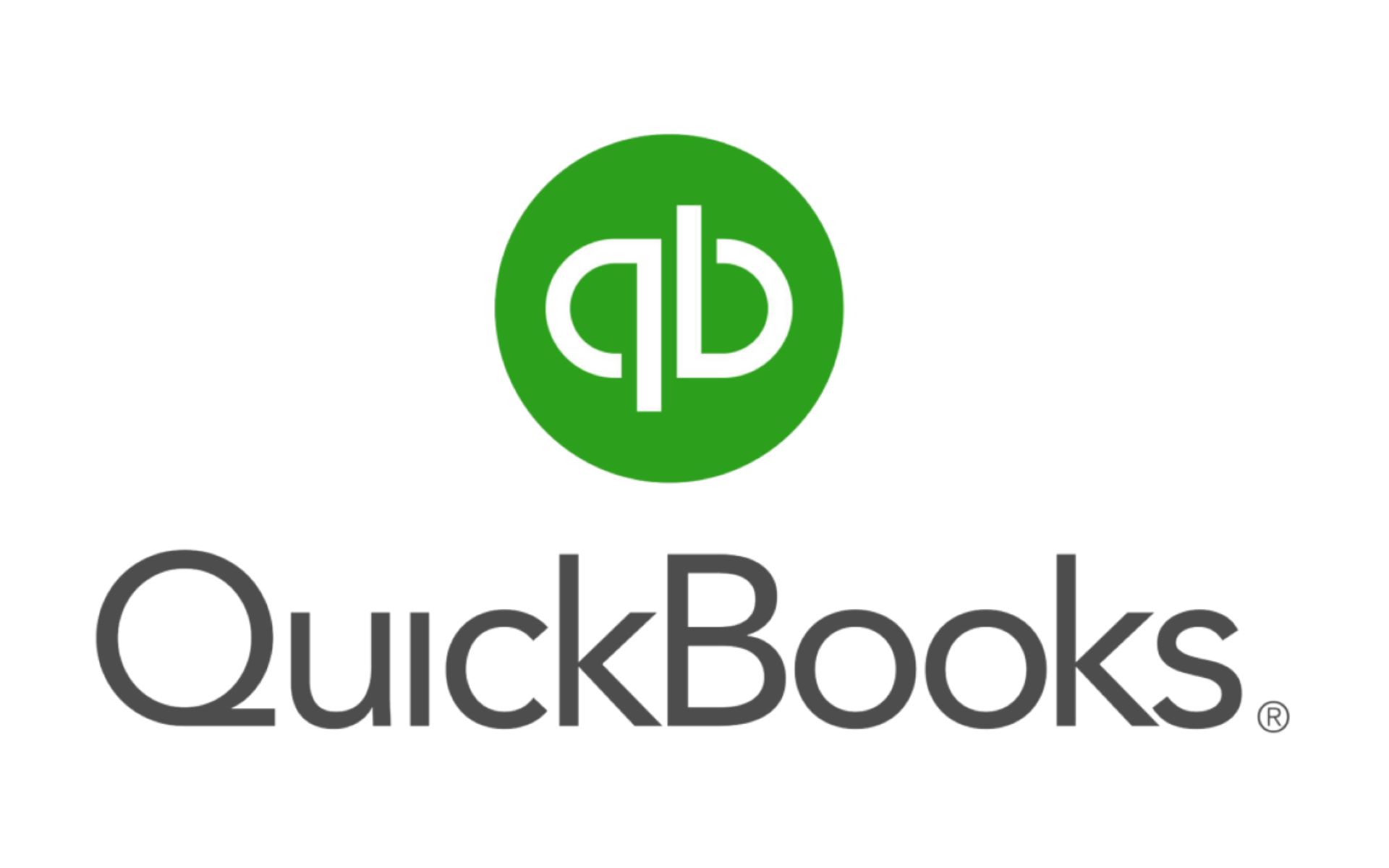Benefits of Adding a Credit Card to Quickbooks
Adding a credit card to your Quickbooks account can offer several advantages for managing your finances and bookkeeping. Whether you’re a small business owner or an individual, here are some compelling benefits to consider:
- Streamlined Expense Tracking: By adding a credit card to Quickbooks, you can easily track and categorize your expenses. This can save you time and effort compared to manually entering each expense individually.
- Accurate and Automated Bookkeeping: Quickbooks can automatically import your credit card transactions, eliminating the need for manual data entry. This helps reduce errors and ensures your financial records are up to date.
- Real-time Financial Insights: Having your credit card transactions synced in Quickbooks allows you to see your financial status instantly. You can easily monitor your cash flow, track expenses, and make informed decisions based on real-time data.
- Improved Expense Classification: Quickbooks provides the ability to assign specific expense categories to your credit card transactions. This enables you to have a clear understanding of where your money is going and helps you to identify areas where you may be overspending.
- Seamless Reconciliation: Reconciling your credit card statements becomes more efficient with Quickbooks. The software can automatically match imported credit card transactions with the corresponding charges, reducing the time and effort required for manual reconciliation.
- Efficient Reporting: Quickbooks generates various financial reports that can provide valuable insights into your credit card spending. From expense reports to income statements, having your credit card data integrated allows for accurate and comprehensive reporting.
- Tax Preparation Made Easier: Come tax season, having your credit card transactions synced in Quickbooks simplifies the process of organizing and categorizing expenses. This can save you time and ensure that you are accurately claiming deductions.
- Improved Financial Organization: Having all your financial data in one place through Quickbooks allows for better organization and easier access. You can view your credit card transactions, bank account balances, and other financial information at a glance, making it easier to stay on top of your finances.
These are just a few of the benefits that come with adding a credit card to Quickbooks. Whether you’re looking to streamline your finances, gain valuable insights, or simplify your tax preparation, integrating your credit card with Quickbooks can be a game-changer for your financial management.
Gathering Required Information
Before you can add a credit card to Quickbooks, it’s important to gather all the necessary information. This will ensure a smooth and efficient setup process. Here are the key details you’ll need:
- Credit Card Provider: Identify and make a note of the name of your credit card provider. This is the financial institution that issued your credit card.
- Credit Card Account Number: Write down your full credit card account number. This can usually be found on the front of your physical credit card or on your credit card statement.
- Online Account Access: Ensure that you have online access to your credit card account. This will allow you to download transactions and link your credit card account with Quickbooks.
- Username and Password: Make sure you have your credit card account’s username and password. These credentials will be required to connect your credit card provider with Quickbooks.
- Security Questions or Two-Factor Authentication: If your credit card provider has additional security measures, such as security questions or two-factor authentication, be prepared to provide the necessary information or set up these features.
- Transaction History: It’s helpful to have access to your credit card transaction history, especially if you’re looking to import past transactions into Quickbooks. You can often download this information as a CSV or QFX file from your credit card provider’s website.
- Statement Due Dates: Take note of your credit card statement due dates. This will be useful when reconciling your credit card statements in Quickbooks and ensuring accurate bookkeeping.
- Expense Categories: Consider establishing your expense categories before adding your credit card to Quickbooks. Having predefined categories will make it easier to assign appropriate classifications to your credit card transactions.
By gathering all the necessary information ahead of time, you’ll be well-prepared to add your credit card to Quickbooks and take full advantage of its features for managing your financial records.
Step-by-Step Guide to Adding a Credit Card
Adding a credit card to Quickbooks is a straightforward process. Follow these step-by-step instructions to seamlessly integrate your credit card with Quickbooks:
- Open Quickbooks: Launch the Quickbooks program on your computer or log in to your Quickbooks Online account.
- Access the Chart of Accounts: In the Quickbooks menu, navigate to the “Chart of Accounts” section. This is where you will manage and track your financial accounts.
- Create a New Account: Click on the “New” button to create a new account within the Chart of Accounts.
- Select Account Type: Choose “Credit Card” as the account type for your new credit card account.
- Enter Account Details: Provide the necessary details for your credit card account, such as the account name, account number, and description. You can also assign an appropriate account number or code for organizational purposes.
- Save the Account: Once you have entered all the required information, click the “Save” button to create your new credit card account.
- Connect with Credit Card Provider: If your credit card provider offers online connectivity with Quickbooks, you can use this feature to link your credit card account. Click on the option to connect with your credit card provider and provide your username and password when prompted. Follow the on-screen instructions to complete the connection process.
- Import Transactions: Once connected, Quickbooks will retrieve your credit card transactions. Depending on your preferences, you can choose to import all transactions or a specific date range.
- Review and Categorize Transactions: After importing the transactions, review them to ensure accuracy. Assign appropriate expense categories to each transaction to help with tracking and reporting.
- Save and Sync: Once you have reviewed and categorized the transactions, save the changes and allow Quickbooks to sync the credit card account. This will ensure that future credit card transactions are automatically imported into Quickbooks.
By following these steps, you can easily add your credit card to Quickbooks and start efficiently managing your financial transactions and records.
Connecting your Credit Card Provider
Connecting your credit card provider to Quickbooks allows for seamless integration and automatic import of your credit card transactions. Follow these steps to establish the connection:
- Access the Banking Center: In Quickbooks, navigate to the Banking Center. This is where you can manage your connected accounts.
- Select the Add Account Option: Look for the option to add a new account or connect a financial institution. Click on it to proceed.
- Search for your Credit Card Provider: Use the search function within Quickbooks to find your credit card provider. Quickbooks has a vast database of financial institutions to choose from.
- Enter your Credit Card Provider Login Credentials: Once you have selected your credit card provider, you will be prompted to enter your login credentials. This typically includes your username and password for your credit card account.
- Complete the Security Verification: Some credit card providers have extra security measures, such as security questions or two-factor authentication. Follow the prompted steps to verify your identity and complete the security verification process.
- Authorize Quickbooks Access: Grant Quickbooks permission to access your credit card account. This allows Quickbooks to import your credit card transactions securely.
- Select the Account to Connect: If you have multiple credit card accounts with the same provider, choose the specific account you want to connect to Quickbooks.
- Confirm and Save the Connection: Review the details of the connection to ensure accuracy. If everything looks correct, save the connection. Quickbooks will then establish the connection with your credit card provider.
- Sync and Import Transactions: After the connection is established, Quickbooks will initiate syncing with your credit card provider. This process imports your recent credit card transactions into Quickbooks. Depending on the amount of transaction data, this may take a few moments to complete.
- Review and Categorize Transactions: Once the transactions are imported, review them to ensure accuracy. Assign proper expense categories to each transaction for better tracking and reporting.
Connecting your credit card provider to Quickbooks simplifies the process of managing and tracking your credit card transactions. It also ensures that your financial records in Quickbooks are always up to date.
Manually Entering Credit Card Transactions
In addition to importing transactions, Quickbooks allows you to manually enter credit card transactions. This can be useful if you have older transactions that are not available for import or if you prefer to enter the transactions manually. Here’s how to manually enter credit card transactions in Quickbooks:
- Access the Banking Center: Open the Banking Center in Quickbooks, where you manage your connected accounts.
- Select your Credit Card Account: Choose the credit card account you want to manually enter transactions for.
- Create a New Transaction: Click on the “New Transaction” button to create a new credit card transaction.
- Enter Transaction Information: Fill in the details of the transaction, such as the date, vendor or payee, and the transaction amount. Quickbooks provides various fields to record additional information, such as the category and memo.
- Assign Expense Categories: It’s important to assign proper expense categories to your transactions. This allows for accurate tracking, reporting, and analysis of your credit card expenses.
- Save the Transaction: Once you have entered all the necessary information, save the transaction. Quickbooks will now include it in your credit card account ledger.
- Repeat for Additional Transactions: Follow the same steps to manually enter any additional credit card transactions that you want to record in Quickbooks.
Manually entering credit card transactions in Quickbooks can be a useful alternative when automated imports are not available or when you prefer to have complete control over entering transaction details. Keep in mind that this method may require more time and effort, especially if you have a large volume of transactions to enter.
By manually entering credit card transactions in Quickbooks, you can ensure that your financial records remain accurate and up to date, giving you a clear overview of your credit card expenses and helping you make informed financial decisions.
Syncing and Automating Credit Card Transactions
One of the key advantages of integrating a credit card with Quickbooks is the ability to sync and automate credit card transactions. This feature ensures that your financial records are up to date and saves you time from manually entering each transaction. Here’s how to sync and automate credit card transactions in Quickbooks:
- Connect your Credit Card Account: Follow the steps outlined earlier to connect your credit card account to Quickbooks. This establishes the link between Quickbooks and your credit card provider.
- Enable Automatic Sync: Once the connection is established, enable the automatic sync feature within Quickbooks. This allows Quickbooks to regularly check for new credit card transactions and import them automatically.
- Choose the Sync Frequency: Select how often you want Quickbooks to sync with your credit card account. You can choose daily, weekly, or monthly sync intervals, depending on your preferences.
- Adjust Sync Settings: Quickbooks provides options to customize the sync settings. You can choose to import all transactions or only those within a specific date range. Additionally, you can set a threshold for the transaction amount to exclude lower-value transactions from being imported.
- Review and Categorize Imported Transactions: After each sync, Quickbooks will import the new credit card transactions into your account. Review them to ensure accuracy and assign appropriate expense categories to each transaction.
- Reconcile with Statements: Regularly reconcile your credit card statements in Quickbooks to ensure that your records match the actual transactions. This helps identify any discrepancies and ensures accurate financial reporting.
- Review and Adjust Automation Rules: Quickbooks allows you to set automation rules for specific types of transactions. For example, you can create rules to automatically classify recurring transactions or assign categories based on specific criteria. Regularly review and adjust these rules to ensure they align with your business needs.
- Monitor and Verify Synced Transactions: Keep an eye on the synced transactions to make sure they are accurately reflected in your Quickbooks account. Any discrepancies or missing transactions should be investigated and resolved promptly.
By syncing and automating credit card transactions, Quickbooks can save you valuable time and ensure the accuracy of your financial records. This integration streamlines your bookkeeping processes and provides you with real-time insights into your credit card spending.
Reviewing and Reconciling Credit Card Statements
Regularly reviewing and reconciling your credit card statements in Quickbooks is essential for maintaining accurate financial records. It ensures that the transactions in Quickbooks match your official credit card statements. Follow these steps to efficiently review and reconcile your credit card statements:
- Access the Reconciliation Window: In Quickbooks, navigate to the Banking Center and find the account associated with your credit card. Open the reconciliation window for that account.
- Choose the Statement Period: Select the statement period for the credit card statement you want to reconcile. This should match the dates covered by your official statement from the credit card provider.
- Import Statement Transactions: If your credit card provider offers the option to download a statement file, import it into Quickbooks. This will populate the reconciliation window with the transactions listed on your statement. Otherwise, manually enter the transactions listed on the statement.
- Compare Transactions: Check each transaction listed on your credit card statement against the corresponding transactions in Quickbooks. Verify that the amounts and details match up accurately.
- Match and Categorize Transactions: In Quickbooks, match each statement transaction with its corresponding transaction in Quickbooks. This helps reconcile the transactions and ensures that your records are accurate.
- Reconcile the Statement: Once all transactions have been matched and categorized correctly, reconcile the credit card statement in Quickbooks. This verifies that your records align with the official statement from your credit card provider.
- Investigate Discrepancies: If there are any discrepancies between the credit card statement and the transactions in Quickbooks, investigate the reasons behind the differences. This could be due to missing transactions, erroneous entries, or timing issues.
- Adjust Transactions if Necessary: If you find any errors or discrepancies, make the necessary adjustments in Quickbooks to correct the records. This ensures that your financial reports accurately reflect your credit card activity.
- Save the Reconciliation: Once the reconciliation is complete and any adjustments have been made, save the reconciliation in Quickbooks. This finalizes the process and confirms that the credit card account is successfully reconciled.
Regularly reviewing and reconciling credit card statements in Quickbooks helps maintain the accuracy of your financial records. It ensures that your credit card activity is correctly recorded and enables you to make informed financial decisions based on reliable data.
Monitoring Credit Card Expenses in Quickbooks
Monitoring your credit card expenses in Quickbooks is crucial for maintaining control over your financials and making informed decisions. By regularly tracking and analyzing your credit card expenses, you can identify spending patterns, manage your budget, and identify areas where you can reduce costs. Here’s how to effectively monitor your credit card expenses in Quickbooks:
- Review Credit Card Transactions: Regularly review the credit card transactions recorded in Quickbooks. This allows you to stay on top of your expenses and ensure that all transactions are accurately recorded.
- Track and Categorize Expenses: Assign appropriate categories to each credit card transaction in Quickbooks. This helps you understand where your money is being spent and enables you to generate insightful reports.
- Generate Expense Reports: Utilize the reporting features in Quickbooks to generate expense reports specifically for your credit card transactions. These reports provide a detailed breakdown of your spending by category, vendor, and time period.
- Analyze Spending Patterns: Regularly analyze your credit card expense reports to identify any trends or patterns in your spending. This helps you make informed decisions about budgeting and adjusting your expenses as necessary.
- Set Budgets and Spending Limits: Use the budgeting features in Quickbooks to set spending limits and track your credit card expenses against these budgets. This helps you stay within your financial goals and identify areas where you may be overspending.
- Monitor Overspending and Unusual Transactions: Keep an eye out for any instances of overspending or unusual transactions in your credit card records. This can help you identify potential financial risks or unauthorized charges.
- Reconcile Credit Card Statements: Regularly reconcile your credit card statements in Quickbooks to ensure that the recorded transactions match your official statements. This helps maintain the accuracy of your financial records and highlights any discrepancies that need to be investigated.
- Review Cash Flow: Monitor your credit card expenses in relation to your cash flow in Quickbooks. This allows you to manage your cash flow effectively and ensure that your credit card spending aligns with your available funds.
- Utilize Alerts and Reminders: Take advantage of the alerts and reminder features in Quickbooks to notify you of important credit card payment due dates, overspending, or any other anomalies in your credit card transactions.
- Regularly Revisit and Adjust Budgets: Continuously evaluate and adjust your budgets based on your credit card expenses and financial goals. This helps you maintain control over your spending and ensures that your budgets stay relevant.
By actively monitoring your credit card expenses in Quickbooks, you can gain valuable insights into your spending habits and make informed financial decisions. This allows you to effectively manage your budget, control costs, and achieve your financial goals.
Managing Credit Card Balances in Quickbooks
Properly managing your credit card balances in Quickbooks is essential for maintaining accurate financial records and staying on top of your credit card payments. It helps you monitor your credit card debt, avoid late fees and interest charges, and maintain a healthy credit score. Here are some steps to effectively manage your credit card balances in Quickbooks:
- Track Credit Card Charges: Ensure that all credit card charges are recorded in Quickbooks as soon as they occur. This helps you maintain an accurate and up-to-date record of your outstanding credit card balances.
- Regularly Reconcile Credit Card Statements: Reconcile your credit card statements with the balance recorded in Quickbooks on a monthly basis. This helps identify any discrepancies and ensures that your records are in sync with your official credit card statement.
- Set Up Credit Card Accounts: Create separate credit card accounts in Quickbooks for each credit card you use. This allows you to track balances and transactions separately for each card.
- Monitor Credit Card Payments: Keep track of your credit card payments in Quickbooks. Make sure to record each payment accurately, noting the date, amount paid, and any associated fees or interest charges.
- Schedule Automatic Payments: To avoid forgetting credit card payments, consider scheduling automatic payments directly from your bank account through Quickbooks. This helps ensure that your payments are made on time.
- Forecast Credit Card Expenses: Use historical information and budgeting tools in Quickbooks to forecast your future credit card expenses. This allows you to plan and budget for upcoming payments.
- Monitor Credit Utilization: Keep an eye on your credit card utilization ratio. This is the percentage of your available credit that you are currently using. High credit utilization can negatively impact your credit score, so strive to keep it below 30%.
- Review Credit Card Interest Rates: Periodically review the interest rates associated with your credit cards in Quickbooks. If you find a better rate elsewhere, consider transferring balances or negotiating with your credit card issuer for a lower rate.
- Generate Financial Reports: Utilize the reporting features in Quickbooks to generate financial reports that display your credit card balances, payments, and interest charges. These reports provide a comprehensive overview of your credit card management.
- Pay Off High-Interest Debt: If possible, prioritize paying off credit card balances with high-interest rates. Allocating more funds towards these debts can save you money in interest charges over time.
By effectively managing your credit card balances in Quickbooks, you can stay in control of your credit card debt and maintain healthy financial habits. Regular tracking, reconciling, and budgeting will help you avoid unnecessary fees, reduce debt, and maintain a positive financial standing.
Running Reports and Analyzing Credit Card Data
Running reports and analyzing credit card data in Quickbooks provides valuable insights into your spending habits, helps you track expenses, and enables informed financial decision-making. By leveraging the reporting capabilities of Quickbooks, you can gain a comprehensive understanding of your credit card activity. Here’s how you can run reports and analyze credit card data in Quickbooks:
- Access the Reports Menu: In Quickbooks, navigate to the Reports menu. This is where you can access a wide variety of financial reports.
- Choose Relevant Report Categories: Explore the different report categories and select the ones that are relevant to your credit card activity. Categories may include expense reports, vendor reports, or financial statements.
- Select Credit Card Reports: Within the report categories, look for specific reports related to credit card transactions or expenses. Common examples include credit card activity reports, spending reports by category, or vendor payment reports.
- Set Reporting Period: Specify the time period for the report. You can choose to generate reports for a specific month, quarter, year, or custom date range.
- Customize Report Filters: Quickbooks allows you to apply filters to reports to refine the data displayed. Filters may include selecting specific credit card accounts, expense categories, or vendors.
- Run and Generate the Report: Once you have set the report parameters and filters, click the “Run” or “Generate” button to generate the report in Quickbooks.
- Review Report Findings: Take the time to review and analyze the report findings. Look for trends, patterns, or anomalies in your credit card data. Pay attention to high-spending categories, vendor relationships, or any areas that may require cost-saving measures.
- Analyze Spending Patterns: Use the reports to analyze your overall spending patterns, identify areas of excess spending, and find opportunities to reduce costs. This can help you optimize your budgeting and save money.
- Compare Periodic Reports: Regularly run reports for different time periods to track changes in your credit card activity. Compare month-to-month or year-over-year reports to measure progress and identify areas of improvement.
- Use Graphical Representations: Leverage the option to display reports in graphical formats, such as charts or graphs. Visual representations can provide a clearer understanding of your credit card data and make it easier to spot trends or outliers.
- Export and Share Reports: Quickbooks allows you to export reports in various formats, such as PDF or Excel. Consider sharing reports with key stakeholders, such as accountants, financial advisors, or business partners, for further analysis and collaboration.
By running reports and analyzing credit card data in Quickbooks, you gain valuable insights into your spending behavior. This enables you to make data-driven decisions, manage expenses effectively, and optimize your financial strategies.
Important Tips and Best Practices
When it comes to managing credit cards in Quickbooks, it’s essential to follow some important tips and best practices to ensure efficient and accurate financial management. Here are some key tips and best practices to keep in mind:
- Regularly reconcile your credit card accounts: Reconciliation helps ensure that the transactions recorded in Quickbooks match your credit card statements, allowing for accurate financial records.
- Set up alerts and reminders: Utilize the alert and reminder features in Quickbooks to stay informed about upcoming credit card payments, statement due dates, or potential overspending.
- Double-check imported transactions: After importing credit card transactions into Quickbooks, review them to ensure accuracy. Mistakes or missing transactions can impact your financial records.
- Categorize transactions consistently: Consistently assign accurate expense categories to your credit card transactions. This facilitates better organization, tracking, and reporting of your expenses.
- Monitor credit card limits: Keep an eye on your credit card limits to avoid reaching the maximum threshold. Exceeding your limit can result in fees and possible damage to your credit score.
- Regularly review credit card interest rates: Stay informed about the interest rates associated with your credit cards. This knowledge helps when making decisions about balance transfers or negotiating lower rates.
- Update credit card accounts as needed: If you change credit card providers, update the account details in Quickbooks accordingly. This ensures that your financial records reflect the accurate information.
- Backup your data regularly: Regularly back up your Quickbooks data to prevent loss of information in case of technical issues or accidental data corruption.
- Keep personal and business credit card transactions separate: Avoid mixing personal and business credit card transactions in your Quickbooks account. This separation simplifies tax preparation and financial analysis.
- Maintain good documentation: Keep receipts and supporting documents for your credit card transactions. This practice helps with proper record-keeping and provides a backup in case of discrepancies or audits.
- Stay informed about credit card rewards: If your credit card offers rewards or cashback programs, consider tracking and reconciling these rewards in Quickbooks. This helps you take advantage of any financial benefits they offer.
- Regularly review and update your budgets: Continuously review your budgets in Quickbooks to align them with your financial goals and adjust as needed based on your credit card spending patterns.
By following these tips and best practices, you can effectively manage your credit cards in Quickbooks, maintain accurate financial records, and make informed decisions about your personal or business finances.
Conclusion
Managing credit cards in Quickbooks is a powerful tool for efficient financial management. By adding credit cards to your Quickbooks account, you can streamline expense tracking, automate bookkeeping, and gain real-time insights into your financials. Through the step-by-step guide, you learned how to connect your credit card provider, manually enter transactions, and reconcile credit card statements. Additionally, you discovered the benefits of monitoring credit card expenses, running reports, and analyzing credit card data.
To make the most of Quickbooks for credit card management, it’s important to follow key tips and best practices. Regularly reconciling your credit card accounts, categorizing transactions accurately, and staying updated on interest rates are essential for maintaining accurate financial records. Utilizing alerts and reminders, separating personal and business transactions, and regularly reviewing budgets are also crucial for effective credit card management in Quickbooks.
By implementing these strategies, you can effectively track your credit card expenses, manage your balances, and make informed financial decisions. Quickbooks provides the tools you need to maintain control of your credit card finances and stay on top of your financial goals.
Remember, effective credit card management in Quickbooks not only saves you time and effort but also empowers you to make the best use of your credit cards while maintaining financial stability.

























